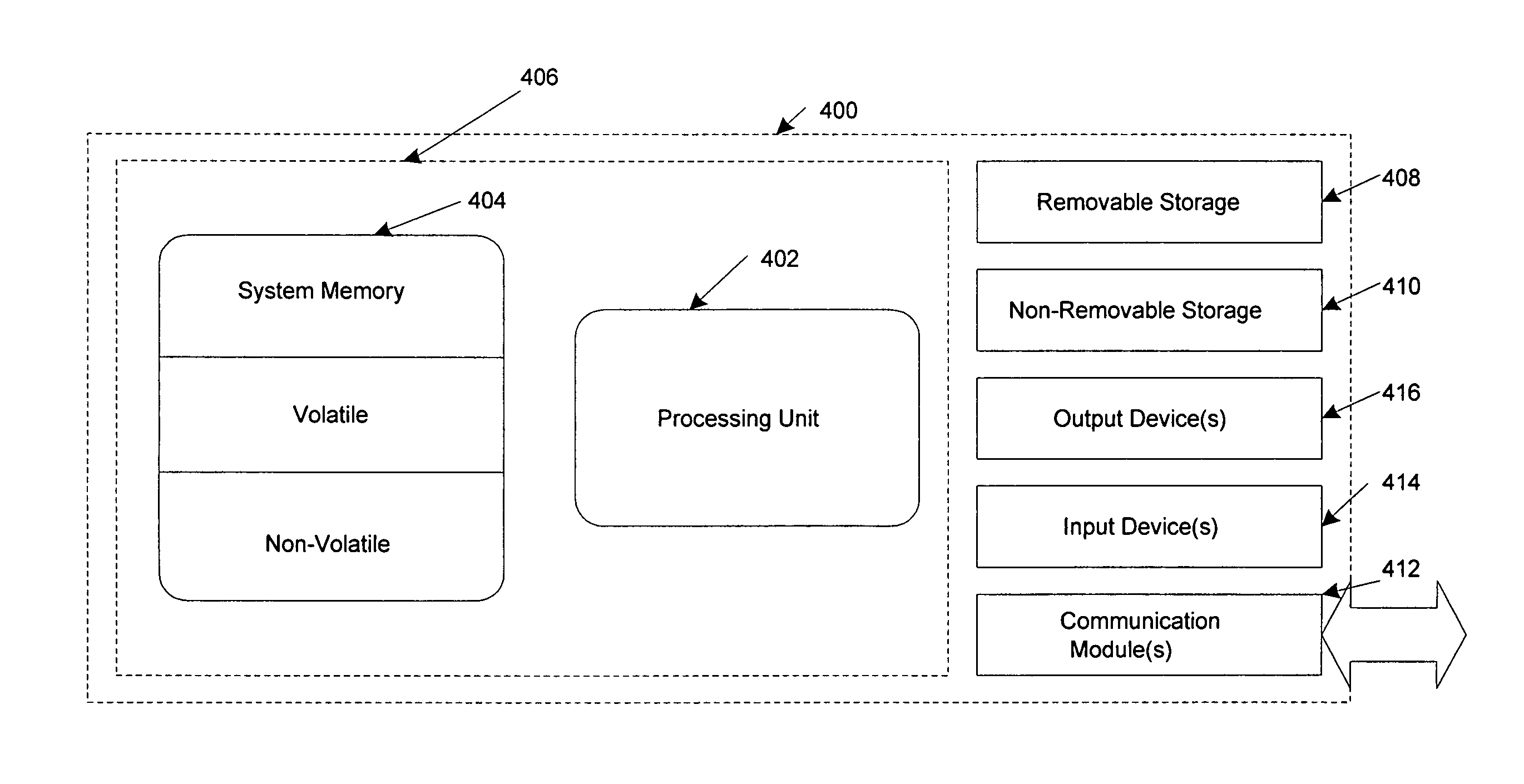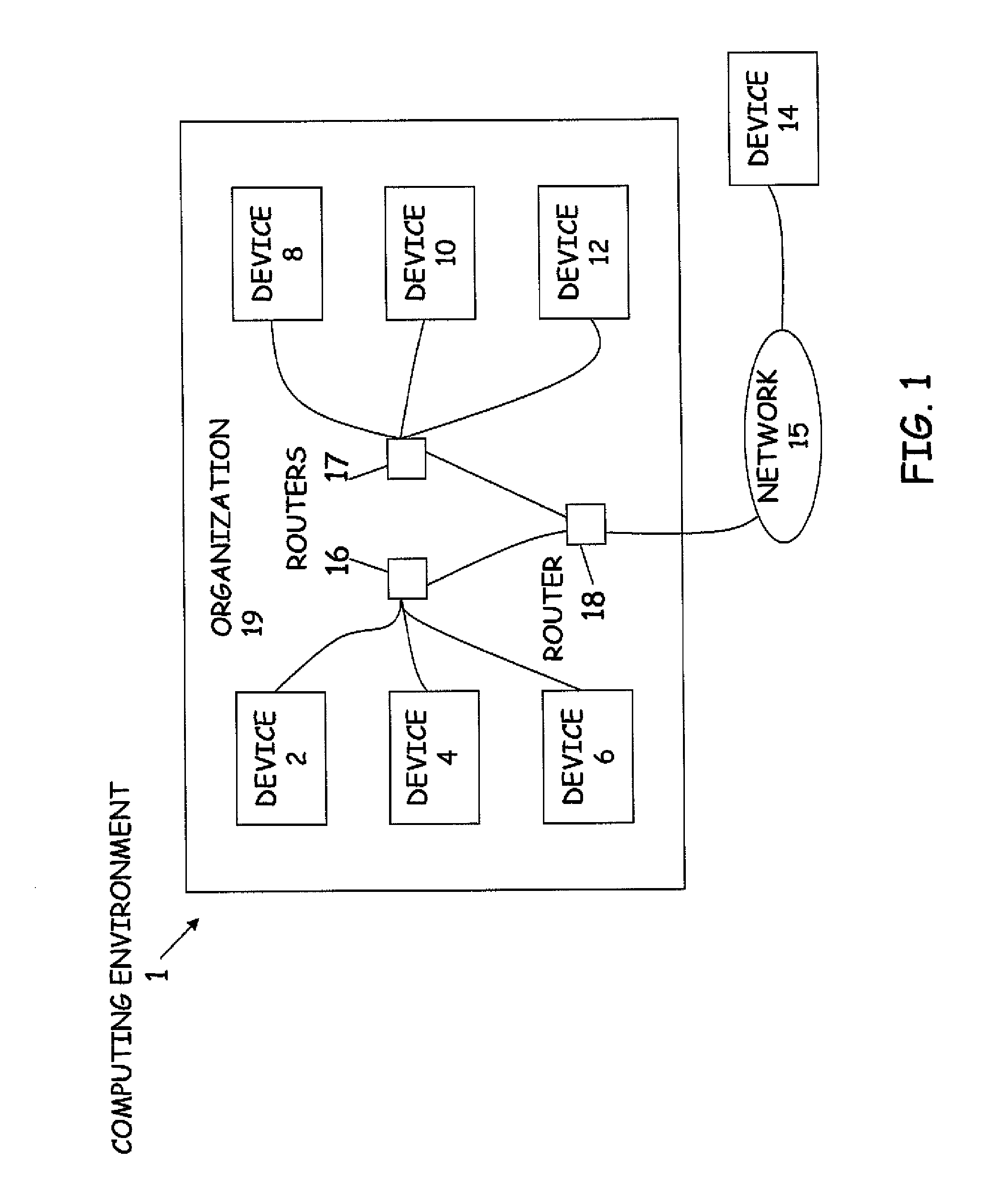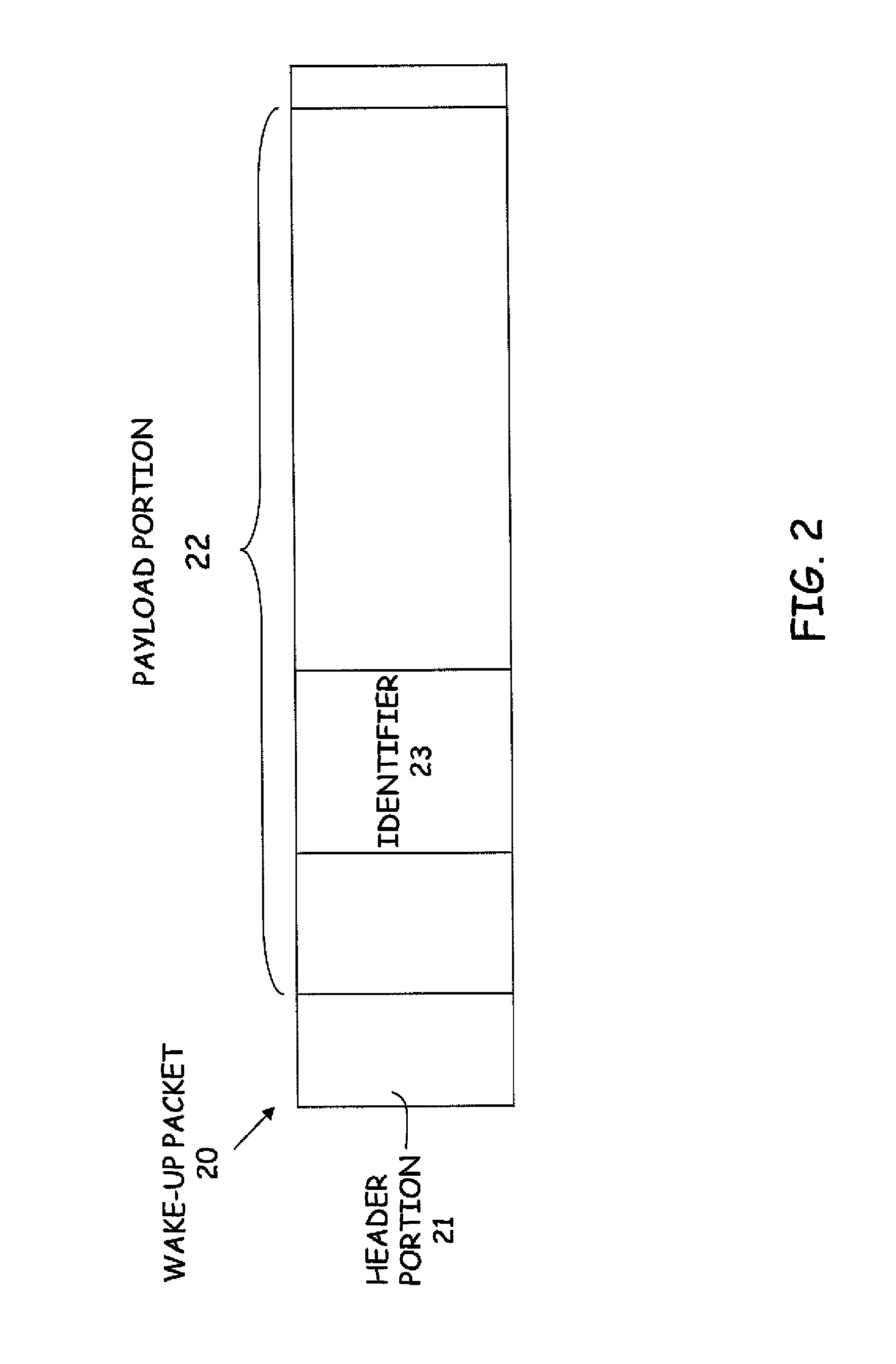Remote device waking using a multicast packet
a computerized device and remote device technology, applied in data switching networks, high-level techniques, instruments, etc., can solve problems such as the office computer not being able to communicate with other computers, and the computer being woken up frequently unintentionally, so as to reduce power consumption
- Summary
- Abstract
- Description
- Claims
- Application Information
AI Technical Summary
Benefits of technology
Problems solved by technology
Method used
Image
Examples
Embodiment Construction
[0018]The Applicants have appreciated that the above-described prior technique for remotely waking a sleeping device may lead to a significant number of unintended device wakings caused by receiving common network traffic. These “false positives” may cause devices on a network to wake up unintentionally. The Applicants have appreciated that unintended device wakings may happen with great frequency on some networks. Unintended device wakings may lead to excess power usage and / or battery drain, and decrease the potential power savings that is achievable by having a computer go to sleep during idle periods. Some embodiments relate to techniques for remotely waking a sleeping device that may reduce the number of unintended device wakings.
[0019]One embodiment relates to remote waking of a sleeping device using a multicasting technique. A device may be joined to a multicast group that may be dedicated to waking up sleeping devices over a network. To wake up a sleeping device, the sleeping...
PUM
 Login to View More
Login to View More Abstract
Description
Claims
Application Information
 Login to View More
Login to View More - R&D
- Intellectual Property
- Life Sciences
- Materials
- Tech Scout
- Unparalleled Data Quality
- Higher Quality Content
- 60% Fewer Hallucinations
Browse by: Latest US Patents, China's latest patents, Technical Efficacy Thesaurus, Application Domain, Technology Topic, Popular Technical Reports.
© 2025 PatSnap. All rights reserved.Legal|Privacy policy|Modern Slavery Act Transparency Statement|Sitemap|About US| Contact US: help@patsnap.com



